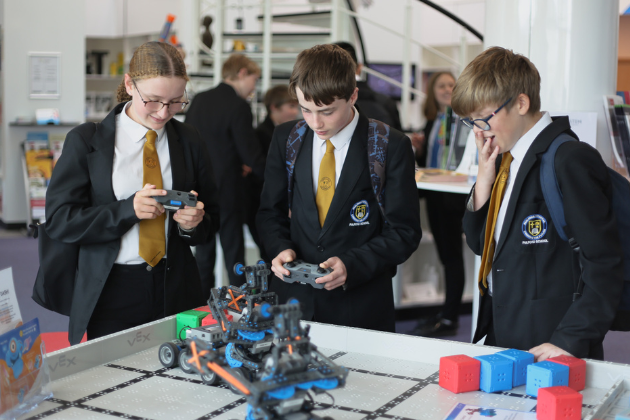Beyond coding: unlocking the full potential of tech careers through creativity
27 February 2024

In their future jobs report, the World Economic Forum outline how socio-economic and technology trends will shape the workplace of the future. It is undeniable that areas of big data analysis, climate change, environmental technologies, cybersecurity, and AI are going to drive the demand for skilled workers of the next decades.
According to the British Council, as many as 65% of today's students will be employed in jobs that do not currently exist. That brings light to the need for the education system to not only provide young people with knowledge and qualifications, but also help them “grow into creative and critical citizens, ready to shape the future for themselves”.
Incidentally, it is the critical/analytical thinking and creative thinking that are valued at the top in terms of skills sought after by most employers when questioned on the topic of the future workforce.
Computing is seen as a very logic-driven discipline – one that requires an analytical mind. You need to be able to see a problem and build a solution. However, Louise Morgan, Head of Digital at STEM Learning argued that it is an artistic mind that can add value and drive innovation. For example, creative thinkers are essential to making the most of new AI tools.
“The wider curriculum can limit us to thinking that a career in computer science equals coding. But tech and digital careers are so much more. By introducing inter-disciplinary teaching – connecting art and computer science for example – we can support students to gain a more varied skillset and improve diversity,” said Louise.
In the 2021 Netflix show ‘Baking Impossible’, bakers teamed up with engineers to build tasty but durable creations. Some turned out to be perfect, while other fell apart at the first stress test. Why not take a similar approach with your students? Have an art class join computer science students for a lesson, run a hackathon to get them thinking about new and creative ideas. This, in turn also improves listening, collaboration and teamworking skills – valued by employers across all fields of work.
Dave Gibbs, Education Strategy Lead at NCCE, said that critical thinking occurs when creativity meets the real world and added:
“A talented sculptor can create a complicated and beautiful sculpture, but it might be made of out a weak material that will crumble with time. Being creative without thinking about the constraints of the environment you operate in is not enough. That’s why creative and critical thinking are the sides of the same coin.”
Severine Trouillet, CEO at STEM Learning, brought up an important point that: “People don’t view the world in the same way, and we need diversity and outside the box thinking to help solve problems in new and innovative ways.”
“What children enjoy most is doing things and making things that do things. That is why project-based learning and enrichment activities are vital. They help students develop skills outside of the classroom and see how those skills can be applied in real-world context.” Severine added.
Girls are shown to learn better and achieve better results when they know the purpose of doing things – the why of a problem. With computer science being a problem-solving focused subject – it is key that we keep encouraging more girls to study it through programmes like I Belong.
Computer programming is the occupation that is expected to grow the most by 2035 in the UK, and technology development is a big driver for this. However, with the fear of tech overtaking some of the jobs, it is people skills that can help ensure young people are equipped for evolving careers of the future.
Louise brought up a key point: “The world is shifting away from transactions to experiences. Seamless, fast. Transactions are what computer science does well, while experiences need a more creative approach. What we are looking for is collaboration and the understanding that varied skills are equally important to the objective.”
Clare Hutchinson, Head of Skills and Partner Engagement at STEM Learning wrapped up the argument by putting a spotlight on curiosity. She says: “What we need is for children to remain curious. Curiosity and flexibility wrap around the critical and creative thinking.”
For more information on careers and how we are celebrating the National Careers Week 2024, make sure to follow us on social media: X, Facebook, LinkedIn.
About the author
Ana Carter is the Marketing and Communications Lead at the National Centre for Computing Education